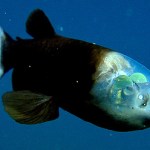Eyes
The space-heads among you have undoubtedly heard about the Curiosity rover's first significant discovery: the remnants of an ancient streambed on Mars, which would seem to indicate the presence of water in the planet's history. This jagged pile of alluvial rock and dust may not look like much, but it brings to mind one of my favorite pieces of Martian historical arcana.
For a time in the late 19th century, it was believed that there were canals on Mars.
The Italian astronomer Giovanni Schiaparelli, who observed Mars in 1877, was the first to describe, name, and lovingly illustrate…
"All things move and nothing remains still" -- Heraclitus
The history of astronomy can be read as a story of better and better vision. Over the centuries, we have supplemented our vision with technology that allows us to see further and more clearly; while Ancient astronomers, who relied only on their naked eyes to perceive the universe, managed to make star catalogues and predict comets, Galileo, pressing his to a telescope, saw all the way to the moons of Jupiter.
Optical telescopes and the human eye are fundamentally limited; early astronomers were forced to gaze into telescopes for…
I've had several people ask me recently where to focus when taking insect photos. Here's my advice.
Aim for the eyes.
Compare:
A phorid fly sits atop a fungus, its compound eye slightly ahead of the focal plane.
The same fly with its eye in the focal plane.
The second photo should be more appealing than the first. Indeed, the first looks out of focus. Strictly speaking, though, this isn't true.
The top photo shows a much greater percentage of the body in focus than does the bottom photo. Look at how crisp the outline of the fly appears in comparison to the…
The most incredible eyes in the animal world can be found under the sea, on the head of the mantis shrimps. Each eye can move independently and can focus on object with three different areas, giving the mantis shrimp "trinocular vision". While we see in three colours, they see in twelve, and they can tune individual light-sensitive cells depending on local light levels. They can even see a special type of light - 'circularly polarised light' - that no other animal can.
But Nicholas Roberts from the University of Bristol has found a new twist to the mantis shrimp's eye. It contains a…
THIS short film clip shows two images of the same scene. Watch it carefully, and see if you can spot the subtle differences between them. As you watch, your eyes will dart back and forth across the images, so that you can perceive the most important features. And even though you might not be consciously aware of the differences, your brain will have picked up on them. This implicit form of remembering is referred to as relational memory; in this case, the brain is encoding the perceptual associations between items in the image. And recent studies have shown that relational…
The barreleye has been known to science since 1939 but scientists have never understood why the fish had a see-through head. Well now researchers at MBARI have solved the mystery: the barreleyes' see-through heads allow them to read each others' thoughts!
OK not true. Actually, their see through heads allow their long tubular eyes to actually stare up through their own noggins. We strongly suggest you go visit the sea monkeys at Deep Sea News to get the whole story. But if you don't care about "facts", and just want pretty pictures and scintillating see-through fish video, well, we got that…
In the comments, Rob Clack asks:
Iâve just read about Martialis on Pandaâs Thumb and have a question. If I interpret it correctly, your cladogram shows Martialis to be the sister group of all living ants. Since it was blind and many living genera are not, that presumably implies that vision evolved independently within modern ants. I would therefore expect there to be some significant differences between modern ant eyes and those of other hymenoptera.
I assume Iâm missing something.
Rob is referring to this post, going straight to the problem that Martialis seemingly poses for our…
Most jellyfish drift freely in the ocean current but the dangerous box jellyfish is an active swimmer. To help it navigate, the box jellyfish has 24 eyes that dangle from their cube-shaped bodies. One set of eyes is remarkably well developed and can detect color, size and shape, similar to our own eyes. At Lund University in Sweden, researchers recently set up a jellyfish obstacle course to test their vision and were surprised by how deftly the box jellyfish were able to avoid objects in the tank. However, their ability to jump through flaming hoops left much to be desire
Clearly there will…


